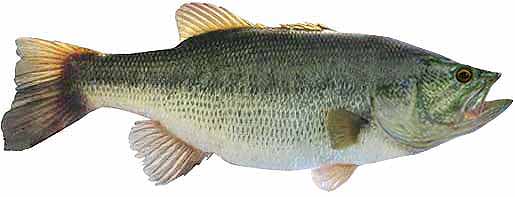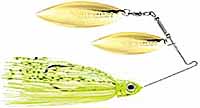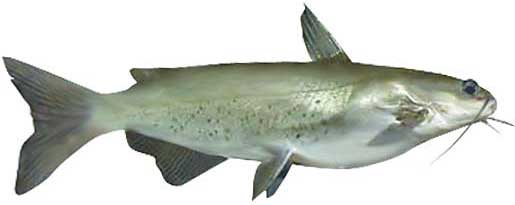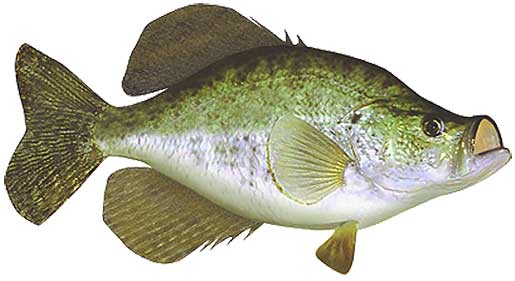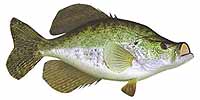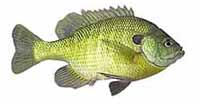Fishing Report For Monroe Lake, IN
By Rick Seaman
Last updated on .
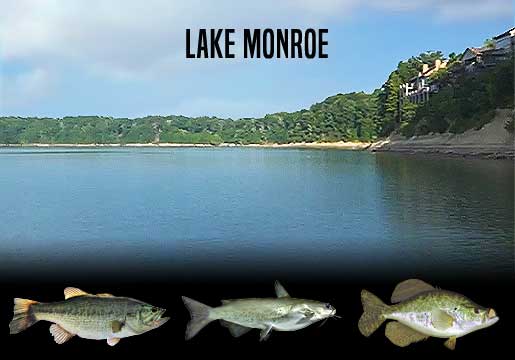
Fishing Reports
Popular Fish Species In Monroe Lake, IN
Largemouth Bass
Current Report: Good To Very Good
Monroe Lake is well-known as an quality largemouth bass fishery.
FALL. Now that Fall has arrived, bass here have moved shallow, following schools of baitfish into coves and shallow bays around 4 to 10 feet of water. Anglers concentrating on the area from Cutright State Recreation Area, both the to Pine Grove area and the Crooked Creek State Recreation Area are reporting good catches of bass. Spinnerbaits and mid-range crankbaits, like the Rapala DT-6, are catching some quality bass. Later in Fall, as deeper water cools, bait and bass move out to ledges, channel edges, points and humps where flutter spoons, jigs and drop shots are often good choices.
WINTER. Winter will isolate them around slightly deeper structure, flats, points and creek channels. They can be found from 20 to 30 feet deep. Here they hold, feeding less frequently, awaiting warmer water to return in Spring. A slow presentation is on order during the cold months.
SPRING. Once water temperatures rise into the low 60's, largemouth will move from deep wintering holes, to shallower water nearby spawning areas. Vibrating jigs, jerkbaits and spinnerbaits typically get bites just away from the shoreline. At this time they are feeding aggressively in about 10 to 15 feet of water, and preparing for the spawn. Once water warms into the mid to high 60's, they will move into 2 to 4 feet of water, and create nests, then lay their eggs. Immediately afterwards, females move to deeper water and males remain to guard the eggs, and then the fry. After a couple weeks, the males also move to slightly deeper water. Crankbaits, vibrating jigs, plastic worms and swimbaits are catching bass during this period.
SUMMER. Water temperatures will warm considerably in Summer. Bass will feed shallow, early and late in the day, where they will be caught on topwater, crankbaits and swimbaits. Largemouth bass here feed on gizzard shad, small sunfish and crawfish. During the hotter parts of the day, they are being caught on points, channel edges, and ledges 15 to 30 feet deep.
Channel Catfish
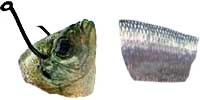
Current Report: Fair To Good
FALL. Fall is one of the better times of year for catching channel catfish. The main body of the lake, from Paynetown State Recreation Area to the Monroe Lake Dam is a consistent producer for channel cats. Early in Fall they cruise the shallows, in search of food. They can typically be found from 10 to 25 feet deep. Later, in the season they migrate away from the shallows and current, to moderately deeper holes in the main body of the lake. Fishing for channel catfish is often productive around any kind of structure. Road beds, creek channels and rocky points are all good places to begin. Use a slip sinker or Carolina rig setup. Use cut bait, nightcrawlers, shrimp or prepared baits. They remain in these areas and feed aggressively in preparation for Winter.
WINTER. In Winter, the channel cats gather in deep holes and go virtually dormant, especially if water cools into the 40's. They hole up in pockets from 15 to 30 feet deep and await warmer water. Slow presentations, especially cut bait, can still entice strikes.
SPRING. In Spring, when water temperatures rise into the high 40's, channel catfish start their migration up river. They hold here, and feed aggressively, around relatively shallow cover until water warms into the mid 70's, at which time they begin the spawn process. Anglers are using slip sinkers, 3-way rigs, or Carolina rigs to keep the bait close to the bottom. There are good numbers of 2 to 4 pound channel catfish being caught.
SUMMER. In Summer, slow-moving water, at the river end of the lake draws catfish to feed, in depths of 20 to 35 feet. At that time, they are scattering, locating cover in slightly cooler water. Reports indicate the most successful anglers are using nightcrawlers, cut bait or shrimp. Fishing from late in the day until midnight is producing some of the best results, as this is their prime feeding time.
White Crappie
Current Report: Good
FALL. Baitfish, which are moving into shallow flats, coves and bays, are drawing crappie into these areas. They are staging in 8 to 15 feet of water, and feeding heavily in preparation for the cold Winter. Minnows, hair jigs, and crappie jigs, are good options during this feeding marathon. Crappie fishing reports have been quite good for anglers fishing brushy shores around the Cutright State Recreation Area, the Pine Grove area and the Crooked Creek State Recreation Area. Late fall starts the migration deeper, toward winter holding areas, for both crappie and baitfish move to 15 or 20 feet deep. Small flutter spoons are a good option during this transition
WINTER. Once the shallows start cooling rapidly, crappie will migrate to deeper holding areas, mostly off shore. At this time they are typically caught using a very slow presentation, in 20 to 25 feet of water. Tree stumps and deep weedlines are good holding ares during the cold months. If they are suspending in open water, they often relate to some cover, or structure change, directly below them.
SPRING. In early Spring, crappie begin staging in 3 to 10 feet of water, just outside spawning bays and shallow flats. Spring is prime time to be on the water, as crappie have moved shallow to spawn. At that time, they are typically caught in 2 to 6 feet of water. Vegetation, docks, brush and wood are where most anglers catch crappie using small crappie jigs or live minnows. After the spawn, crappie typically move outside the spawning area and hold on cover close by, in 10 to 12 feet of water. Once they move even deeper, anglers report success using fish finders and forward facing sonar to locate schools of crappie, which tend to stack vertically around cover. Light tackle, with 4 lb to 8 lb line, is a popular choice.
SUMMER. Water temperatures warm, and crappie fishing is usually pretty good. Now that the spawn is over, and the hot Summer sun is warming the shallows, crappie have retreated to depths of 15 to 30 feet, or embedded in the shade of slightly shallower vegetation. This is a good time to focus around timber and deeper brush piles. Anglers are also locating schools of crappie hanging over deep structure and around creek channel edges.
Fishing Video
Fish species to fish for...
Guide to fishing for largemouth bass, channel catfish, white crappie, walleye and bluegill at Monroe Lake in Indiana.
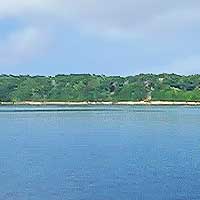 Monroe Lake, situated in south-central Indiana, is a premier destination for fishing enthusiasts seeking a memorable angling experience. With its expansive size of over 10,000 acres, Monroe Lake offers abundant fishing opportunities.
Monroe Lake, situated in south-central Indiana, is a premier destination for fishing enthusiasts seeking a memorable angling experience. With its expansive size of over 10,000 acres, Monroe Lake offers abundant fishing opportunities.
Primary fish species to catch
Click images for fishing tips and details about each species.
Today's Weather & Forecast
Fishing Boat Rentals
Click here for fishing boat rentals.
Public Boat Launch Ramps & Landings
Click here for boat ramps.
Click here for a Indiana Fishing License.
Map - Fishing & Access
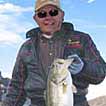 Rick Seaman is a fishing enthusiast with over five decades of fishing experience, a retired tournament fisherman, author of numerous published articles on fishing, and co-author of the book "Bass Fishing - It's not WHAT you throw, It's WHERE you throw it".
Rick Seaman is a fishing enthusiast with over five decades of fishing experience, a retired tournament fisherman, author of numerous published articles on fishing, and co-author of the book "Bass Fishing - It's not WHAT you throw, It's WHERE you throw it".
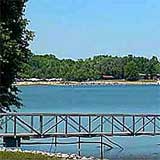 Contact Information
Contact Information
Lake Monroe Boat Rental
4855 S State Road 446
Bloomington, IN 47401
812 837-9909
Fishing lakes in each state
100625
Monroe Lake in Indiana
INDIANA


Crappie, bass and catfish fishing in central IN.


